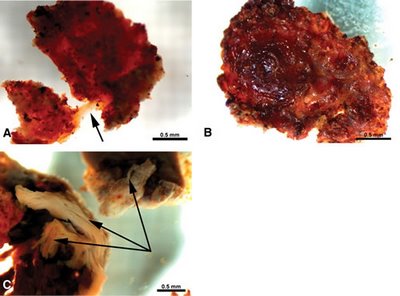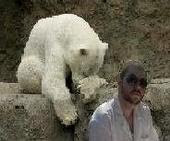Soft Tissue Found Inside T. Rex Fossil
from California Academy of Sciences
When paleontologists find fossilized dinosaur bones during a dig, they usually do everything in their power to protect them, using tools like toothbrushes to carefully unearth the bones without inflicting any damage. However, when scientists found a massive Tyrannosaurus rex thigh bone in a remote region of Montana a few months ago, they were forced to break the bone in two in order to fit it into the transport helicopter. This act of necessity revealed a startling surprise: soft tissue that had seemingly resisted fossilization still existed inside the bone. This tissue, including blood vessels, bone cells, and perhaps even blood cells, was so well preserved that it was still stretchy and flexible.
A scanning electron microscope revealed that the dinosaur blood vessels, which are 70 million years old, are virtually identical to those recovered from modern ostrich bones. The ostrich is today’s largest bird, and many paleontologists believe that birds are the living descendants of dinosaurs. Scientists may be able to confirm this evolutionary relationship if they can isolate certain proteins from the recently discovered T. rex tissue. These proteins could also help solve another puzzle: whether dinosaurs were cold-blooded like other reptiles or warm-blooded like mammals.
Does this discovery of soft dinosaur tissue mean that scientists will soon be able to clone a Tyrannosaurus rex? Probably not – most scientists believe that DNA cannot survive for 70 million years. Then again, before this discovery, most scientists believed that soft tissue could not survive for 70 million years either.



1 comment:
maybe thats becasue its not 70 million years old. maybe this proves that the earth is not as old as first thought.
Post a Comment